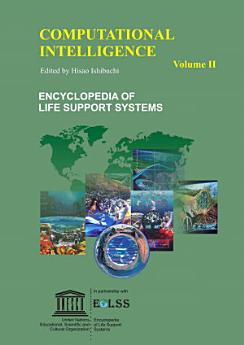Computational Intelligence - Volume II
À propos de cet e-book
Computational intelligence is a rapidly growing research field including a wide variety of problem-solving techniques inspired by nature. Traditionally computational intelligence consists of three major research areas: Neural Networks, Fuzzy Systems, and Evolutionary Computation. Neural networks are mathematical models inspired by brains.
Neural networks have massively parallel network structures with many neurons and weighted connections. Whereas each neuron has a simple input-output relation, a neural network with many neurons can realize a highly non-linear complicated mapping. Connection weights between neurons can be adjusted in an automated manner by a learning algorithm to realize a non-linear mapping required in a particular application task.
Fuzzy systems are mathematical models proposed to handle inherent fuzziness in natural language. For example, it is very difficult to mathematically define the meaning of “cold” in everyday conversations such as “It is cold today” and “Can I have cold water”. The meaning of “cold” may be different in a different situation. Even in the same situation, a different person may have a different meaning. Fuzzy systems offer a mathematical mechanism to handle inherent fuzziness in natural language. As a result, fuzzy systems have been successfully applied to real-world problems by extracting linguistic knowledge from human experts in the form of fuzzy IF-THEN rules.
Evolutionary computation includes various population-based search algorithms inspired by evolution in nature. Those algorithms usually have the following three mechanisms: fitness evaluation to measure the quality of each solution, selection to choose good solutions from the current population, and variation operators to generate offspring from parents. Evolutionary computation has high applicability to a wide range of optimization problems with different characteristics since it does not need any explicit mathematical formulations of objective functions. For example, simulation-based fitness evaluation is often used in evolutionary design. Subjective fitness evaluation by a human user is also often used in evolutionary art and music.
These volumes are aimed at the following five major target audiences: University and College students Educators, Professional practitioners, Research personnel and Policy analysts, managers, and decision makers.
À propos de l'auteur
Professor Hisao Ishibuchi received the BS and MS degrees in precision mechanics from Kyoto University, Japan, in 1985 and 1987, respectively. He received the Ph. D. degree from Osaka Prefecture University, Japan, in 1992. Since 1987, he has been with Osaka Prefecture University, Japan, where he was a research associate (1987-1993), an assistant professor (1993), and an associate professor (1994-1999). He is currently a professor since 1999. He is also the Head of Computational Intelligence Research Center, Osaka Prefecture University since 2006.
His research interests include evolutionary multiobjective optimization, fuzzy rule-based classifiers, multiobjective genetic fuzzy systems, data mining, and multi-agent systems. He received GECCO 2004 Best Paper Award in the Genetic Algorithm Track, ISIS 2005 Outstanding Paper Award, EFS 2006 Best Runner-Up Paper Award, HIS-NCEI 2006 Best Paper Award, GECCO 2007 Competition First Prize, 2007 JSPS PRIZE from the Japan Society for the Promotion of Science, and GEFS 2008 Best Paper Finalist Award.
He is the IEEE CIS Fuzzy Systems Technical Committee Chair (2008-) and a Vice-President of Japan Society for Fuzzy Theory and Intelligent Informatics (2007-2009). He is also an associate editor of IEEE Trans. on SMC: Part B (2002-), IEEE Trans. on Fuzzy Systems (2004-), IEEE CI Magazine (2005-), and IEEE Trans. on Evolutionary Computation (2007-). He was an Area Chair of IJCNN 1997 and FUZZ-IEEE 1998, a Technical Co-Chair of FUZZ-IEEE 2006, a Program Co-Chair of EMO 2007, an Area Chair of IFSA 2009 and FUZZ-IEEE 2009, and the Program Chair for CEC 2010.




